Religious communities and places of worship in Gumbinnen
We have a small idea of the paganism of the ancient Prussians, but there is no information about the beliefs of their predecessors. In the territory of the Kreis (district) of Gumbinnen there are no religious objects of the Prussians or even traces of them, with the exception, perhaps, of a few burial grounds.
In the middle of the 13th century, the Teutonic Knights appeared on the Prussian lands, converting the pagan Prussians to Christianity with fire and sword. Catholicism came to the Prussian lands with the order, and with it the first churches. But there are no religious buildings from the order's time on the territory of the region either.
At the end of the first quarter of the 16th century, the last Master of the Order, Albrecht of Brandenburg, abolished the knightly-monastic order and himself converted from Catholicism to Lutheranism. Lutheranism also became the state religion in the new secular state created on the former lands of the Order, the Duchy of Prussia. And it was at the end of the 16th century that the first church in the Gumbinnen region was mentioned.
At the beginning of the 18th century, settlers from Western Europe came to these lands devastated by the plague epidemic: Lutherans from Salzburg, Calvinist Reformed from Switzerland, Huguenots from France. With their arrival, a new stage in the religious history of Gumbinnen began - churches and chapels built by adherents of various Protestant denominations, buildings of religious communities and community cemeteries appeared. In addition to those listed, in the following years, Jews, Orthodox, Mennonites and Baptists also appeared here.
Until the 1930s, peaceful coexistence of religions continued. With the rise of the Nazis to power, persecution of Jews began in Gumbinnen, as throughout Germany. After the end of World War II and the formation of the Kaliningrad Region, religious life in the area was not revived, many religious buildings were demolished or converted into warehouses and clubs. Only at the end of the last century did the revival of religious life begin, the restoration of churches, the construction of churches and community buildings.
Let's look at the main religious buildings of Gumbinnen.
Evangelical Lutheran Church of the Old Town (Altstädtische Kirche)
The oldest religious building in the city. Presumably, the first church was
built by 1570, since on the map of the Gumbinnen area, compiled in 1585 by
Christoph Voigt, the church is marked on the right bank of the Pissa River. In
1720, the church building was renovated, and rebuilt again in 1809-1811. By
1875, the church acquired a high bell tower and acquired its familiar postcard
appearance. In the 1920s, the last renovation in the history of the church was
carried out.
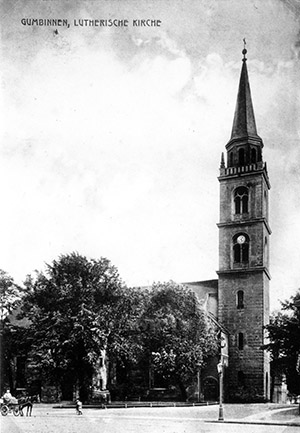
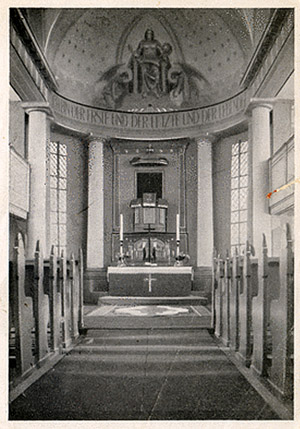
In October 1944, the church building was damaged during Allied air raids on the city. All wooden structures burned down. In December of the same year, the church tower was blown up by German sappers to deprive Soviet artillery of a possible landmark.
After the war, the ruins of the church were completely dismantled. For a long time, there was a vacant lot in its place. In 2010, construction began on this site of the Orthodox Church of All Saints in memory of those who died during the First World War. The new church was consecrated in November 2016.
The house of the superintendent, the head of the Lutheran community and parishes of the Gumbinnen district, located next to the church, has not survived either.
The Evangelical Lutheran community of the Krais had 22,000 parishioners and was the first and largest community that actively contributed to the development of the spiritual and cultural life of the city and region.
Evangelical Reformed Church of the New Town ( Neustädtischen
Kirche)
After the eastern part of Prussia, which had been almost deserted after the
plague, began to be populated by new residents at the call of King Friedrich
Wilhelm I, along with settlers from Salzburg, Swiss, French, residents of the
Palatinate, Nassau and other German lands came here. Most of them were
Protestants, but they left their places of residence not because of religious
persecution, but rather for economic reasons.
As early as 1716, a French-Swiss congregation was founded in Gumbinnen. Since the congregation did not yet have a church building, services were held in farm buildings and other suitable premises, in both German and French. Gradually, this congregation transformed into an evangelical reformed congregation. In 1939, its membership was 3,600.
Funds for the construction of the Evangelical Reformed Church on Königstrasse (now Pobedy Street) were allocated, at the request of the emigrants, by the Prussian King Friedrich Wilhelm I from the state treasury. It was built between 1736 and 1739. The church's bell tower was never finished. The reason for this was the high construction cost, which irritated the tight-fisted monarch. In this unfinished state, the church stood until the end of World War I.
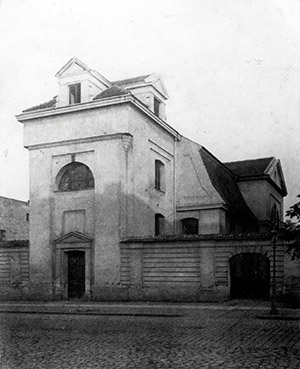
The construction of the tower was resumed only in 1918. However, due to the chronic shortage of money after the war, the tower was again not finished, and instead of the dome envisaged by the project, it received only a temporary roof. It remained in this unfinished state.
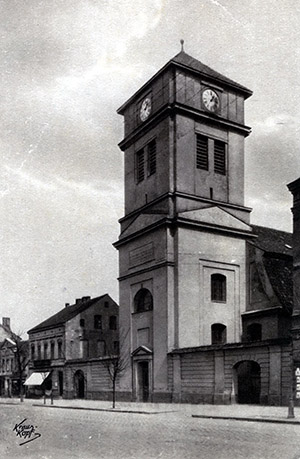
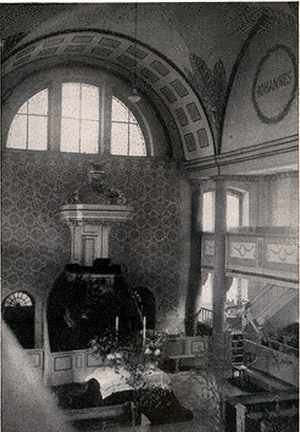
After the bombing of Gumbinnen in October 1944, the church burned down completely. On the ruins of its bell tower, on January 21, 1945, the Red Army soldiers hung the Victory Banner.
The ruins of the church stood until the end of the 1980s, and were then dismantled. Today, a residential building stands in its place. The community building has been preserved in a reconstructed form.
Salzburg Church
In 1732, 16,000 people from Salzburg moved to Prussia, 12,000 of whom arrived in
Gumbinnen and its surroundings. Friedrich Wilhelm I greeted the new arrivals
with the words: "New sons for me, a good Fatherland for you."
Most of the settlers were initially settled in Gumbinnen and the countryside around the city. Later they were settled throughout the eastern part of East Prussia from Tilsit to Goldap.
A hospital was founded in the city in 1740 for the new arrivals. In three hospital buildings with 25 rooms, the settlers who needed care received free overnight accommodation and care. The hospital also had a small wooden church, built in 1752-1754. A community cemetery was located near it.
In 1838, the dilapidated building of the church was demolished, and on October 15, 1840, a new, stone building of the Salzburg Church was ceremoniously opened, built according to the design of the famous Berlin architect Karl Friedrich Schinkel (his authorship, among other things, also includes the now lost Altstadt Church in Königsberg and the monument erected at the site of the death of the hero of the Patriotic War of 1812, Field Marshal M. B. Barclay de Tolly, in the estate of Stilitzen (Zhilaytschen, now Nagornoye), not far from Insterburg (now Chernyakhovsk) - admin ).
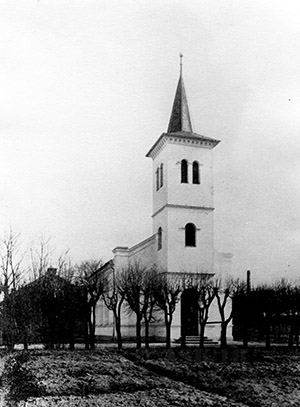
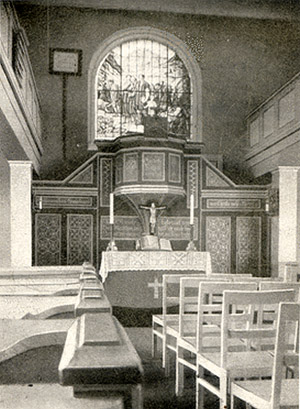
This church survived the Second World War and was used as a warehouse in the
post-war period.
In 1993-1995, the church was restored and reopened. Today, it belongs to the
Evangelical community of the city of Gusev.
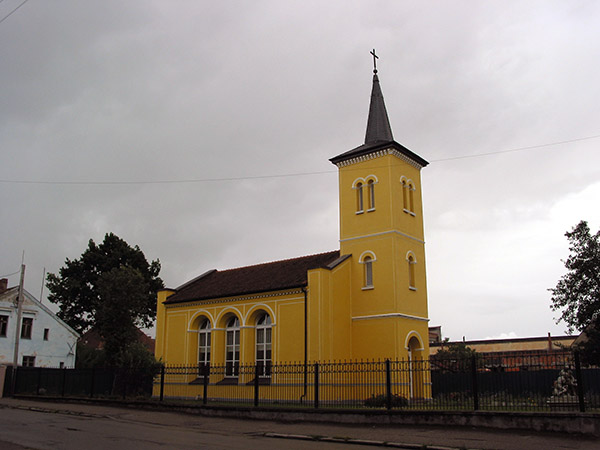
The recently restored fresco on the wall of the assembly hall of the former Friedrichschulle building, created in 1912-1913 by Otto Heichert, a member of the Königsberg Academy of Arts, recalls the resettlement of Salzburg residents to East Prussia.
Roman Catholic Church of St. Andreas
It is difficult to say for sure whether the "early" Catholics who disagreed with
the dogmas of Protestantism during the time of Duke Albrecht were the ancestors
of the members of the Catholic community of Gumbinnen, or whether it was founded
later by Catholic immigrants from neighboring Poland and Lithuania. In 1939, it
had about 600 parishioners and its influence on the religious and social life of
the city and the region can hardly be considered significant.
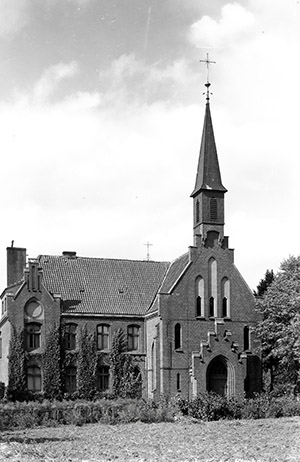
The building of the Catholic Church in honor of St. Andreas on Moltkestrasse (now Smirnova Street) was consecrated on April 21, 1901.
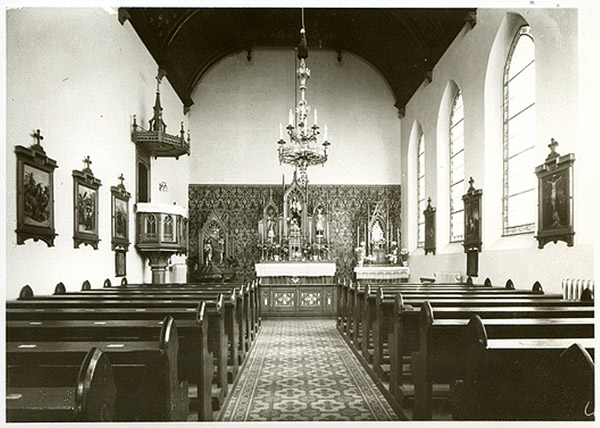
This church was under the jurisdiction of the Catholic parish of Insterburg.
During the war and after its end, the church building was not destroyed and is well preserved. Today it is located on the territory of a military unit and, together with a small extension, is used as a soldiers' club.
Jewish Community
Daniel Joel, an engraver and stone cutter from the Russian Empire, received a
royal protection letter in 1767 and arrived in Gumbinnen. He became the first
Jew to settle in the city. Soon, a prayer room appeared next to the old city
cemetery on Meelbeckstrasse (now Shkolnaya Street), and later a plot was
allocated for the burial of Jews.
Apparently, the number of residents professing Judaism grew, since in 1780 a synagogue had already appeared in Gumbinnen. Presumably, it was located on Insterburgerstrasse (now Lenin Avenue), on land that belonged to the private Blass brewery, but the total number of Jews inhabiting Gumbinnen did not exceed 50 people.
On November 19, 1842, a new synagogue opened on Lange Reistrasse (now Sapernaya Street). It was a two-story red brick building, with the rabbi and his family living on the first floor and a spacious prayer hall on the second. According to the 1925 census, about 200 Jews lived in Gumbinnen.
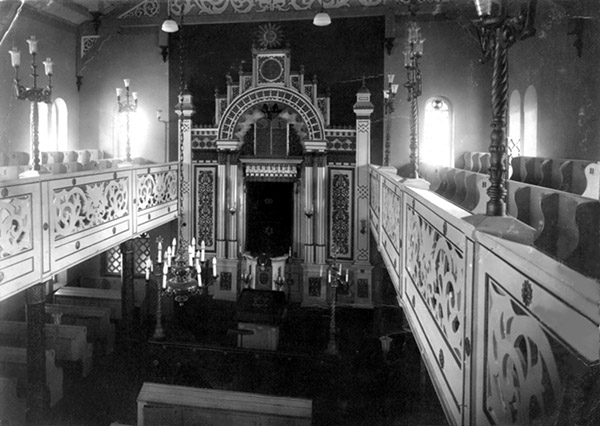
On Kristallnacht, November 10, 1938, the city's synagogue, like many others in the country, was burned and destroyed by the Nazis. After 1940, not a single Jew remained in the city.
Other religious communities in Gumbinnen
In addition to the aforementioned large communities, there were also various
smaller religious associations in the city.
For example, the Baptist community numbered 120 people. The Baptist chapel, built in 1924, was located in the eastern part of the city on Schillerstrasse (now Zoya Kosmodemyanskaya Street). Currently, the building is used as a garage for an orphanage.
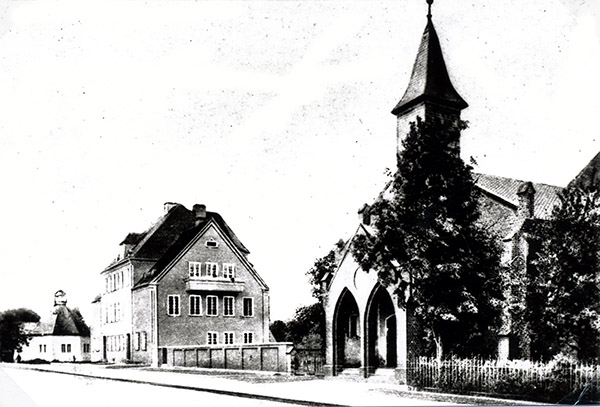
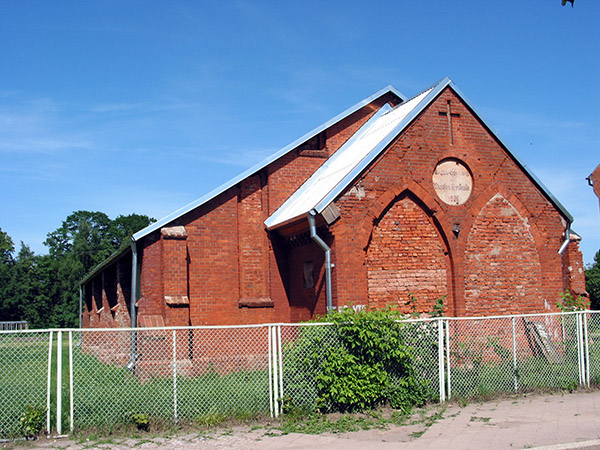
On the same street was also the Kreuz-Kirche (Church of the Cross), which belonged to the Evangelical community. In 1934, it had only 36 members. The church building survived the war and in the 1990s was transferred to the Russian Orthodox Church. The small church building was significantly rebuilt and today is the Church of the Assumption of the Blessed Virgin Mary.
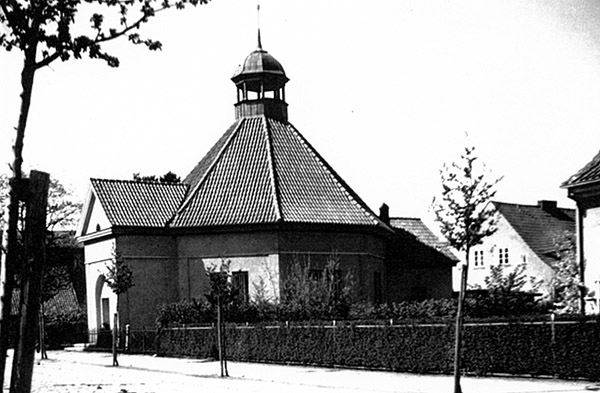
The New Apostolic congregation was founded in Gumbinnen in 1907. Services were initially held in various private homes and rented premises, and in 1913 a permanent location appeared in the house at 37 Bismarckstrasse (now Moskovskaya Street). But even for the small congregation, this space turned out to be too small. Therefore, a building was later purchased on the outskirts of the city on Kasernenstrasse (now Suvorova Street), which had previously belonged to a bankrupt company. After the war, the building was not preserved; now there is a vacant lot in its place.
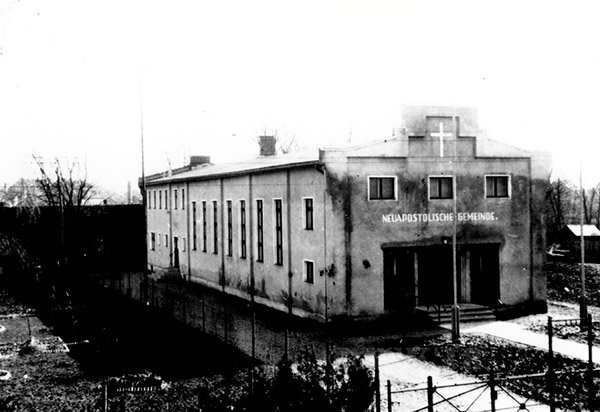
City Cemeteries
The religious communities had several burial sites in the city. The two large
city cemeteries are worth mentioning.
The Old City Cemetery (Alte Friedhof), opened in 1808, was located along
Meelbeckstrasse and consisted of several sections: the old Norutschatschen
Cemetery (named after the nearest village to the city, Norutschatschen), the
burial site of the deceased parishioners of the Evangelical Lutheran community,
and the cemetery of the Reformed community. As mentioned above, the cemetery
also had a section for the burial of Jews.
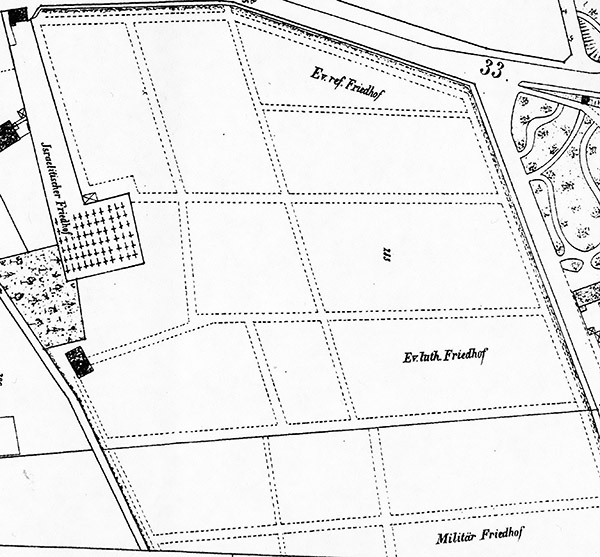
Today, this cemetery has been razed to the ground and its territory is part of the city park. The cemetery chapel, which is used by the Russian Orthodox Church, has been preserved.
The territory of the old cemetery was protected by a dam from the floods of the Pissa. In front of the entrance to the cemetery there was a guard's house. In the rear part of the cemetery in 1813, French soldiers who died during Napoleon's campaign against Russia were buried. And in 1914, the first burials of those killed in the First World War appeared in the cemetery .
The city developed and there was not enough space in the old cemetery. A plot along Sodaikerstrasse (now Krasnoarmeyskaya Street) near the stadium was allocated for a new cemetery. There was already a large burial site of Russian and German soldiers who died in World War I there. Today, residential buildings stand on the former territory of this cemetery. The cemetery chapel built in 1926 was given to the Catholic parish of Gusev.

In addition to these two city cemeteries, there were several other small areas used for burials.
Thus, a large number of German soldiers who died in 1944-1945 in the fighting near Gumbinnen were buried in the Fichtenwalde forest . West of the Salzburg church there was a communal cemetery. The French were also laid to rest there in 1813.
The oldest burial place in the city was the so-called "plague cemetery", located almost in the city center, north of Friedrichstrasse (Lenin Avenue) and west of Blumenstrasse (no longer exists), approximately where house No. 7 on Sapernaya Street is located. This cemetery, which was closed back in 1808, was also where the French soldiers who died in Gumbinnen in 1813 were buried.
This is a brief history of the religious communities and buildings of Gumbinnen. The next part will look at the religious buildings of the villages of the Gumbinnen region.
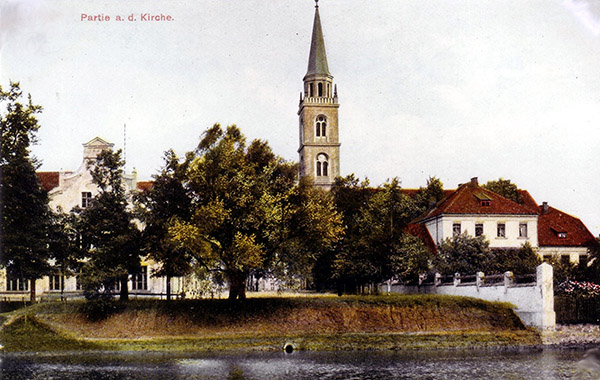
(Based on materials from the archives of the Gumbinnen Association (Bielefeld)
